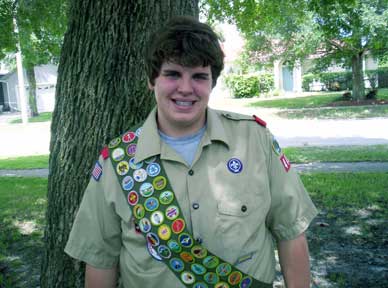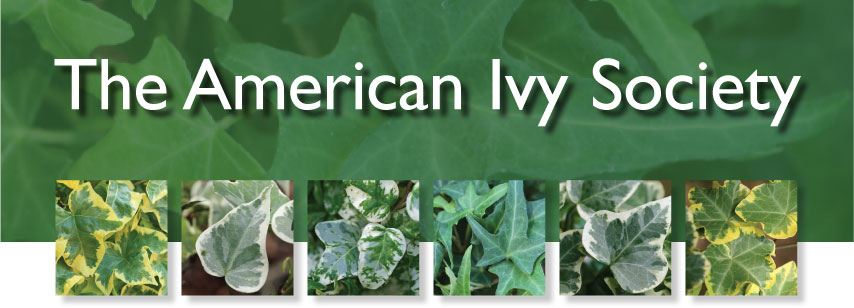Sugar Mill Botanical Garden
Boy Scout Helping Rebuild
Florida Botanical Garden
By
Suzanne Pierot, President of The American Ivy Society
Hurricane Charlie in 2004 destroyed much of Sugar Mill Botanical Garden near Daytona Beach, Florida and with it went the Reference Collection of the American Ivy Society. It took over a year for part of the gardens to be restored, but the 1⁄2 acre Ivy Garden was left abandoned.

Nick Sault, from Port Orange Atlantic High School, a 17 year old high school senior and Boy Scout, has taken on the daunting task of restoring the 1⁄2 acre Ivy Garden as part of his Eagle Badge requirements.
Nick cleared the fallen trees, weeds and debris and then set out to personally raise $1000 to put in a landscaping curb. When the cost turned out to be $4000, much more than he had, a local business, Milligan’s Concrete, chipped in and provided the concrete curbing at less then their cost.
Nick also contacted Russell Windle, owner of Hedera etc., a nursery specializing in ivy to learn if he could supply not just any ivy – but all the ivies that were in the original ivy gardens at Sugar Mill. When the American Ivy Society learned of Nick’s project, it donated all the plants.
Nick, whose full name is Nicholaus Alan Sault, joined the Cub Scouts in 1996 as a Tiger Cub and has worked his way up to Life Scout, the highest rank in scouting. Nick has already earned 58 of the 121 merit badges available in scouting, well above the
21 required for Eagle Scout.
Nick liked the idea of undertaking the project at Sugar Mill Gardens since this is where his “Arrow of Light” Crossover ceremony took place (when a Cub Scout crosses from Cub to Boy Scout). He had already taken a class in horticulture at Silver Sands Middle School and was taking an Agricultural Science class at Atlantic High School.
Nick contacted the President of Sugar Mill Gardens and asked if there was a project he could complete for his Eagle Award. The President showed him a small butterfly garden that needed replanting, a pond that needed refurbishing and an area for grasses, but none of these appealed to him. When the President took him back to a totally destroyed wooded area with fallen trees and much overgrowth and explained that formerly it was the only garden in the South with an ivy collection recognized by the American Ivy Society, Nick knew he had found his project.
Nick was told that this was a large project and that it could be completed in portions. It was suggested that perhaps Nick could clear the garden and another scout could do the replanting as their Eagle Projects. Nick volunteered to do the whole thing by himself – all the clearing and all the planting.
Nick learned from www.ivy.org, the web site of the American Ivy Society, that ivies are easily identified according to their shape, so in addition to the ivies that were originally at Sugar Mill, Nick intends to plant examples of all the shapes in the Pierot Classification System: the Bird’s Foot, Fans, Curlies, Heart Shapes, Variegateds, Miniatures and Oddities. He will also have a section for the “Ivy of the Year”, a national program of the American Ivy Society that selects an ivy each year for its attractiveness, ease-of-growth and its multi-purpose use.
What is today ‘Sugar Mill’, was Dunlawton Plantation in the 1830s and made molasses from sugar cane. After a war with the Seminole Indians, the Battle Dunlawton and the Civil War, the sugar mill was abandoned. The land was donated to Volusia County in 1963 and is now managed by Botanical Gardens of Volusia, Inc., a non-profit organization with no salaried employees.
Also see The Re-created Ivy Gardens at Sugar Mill Botanical Gardens
